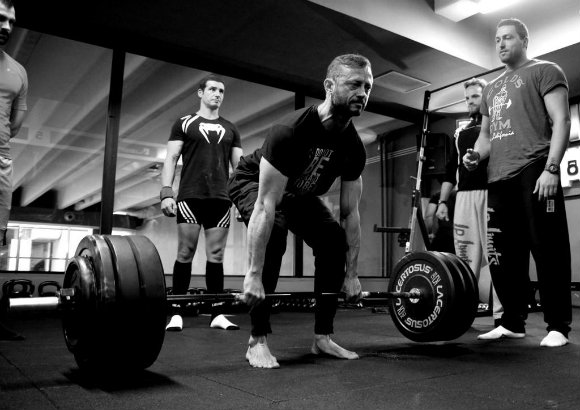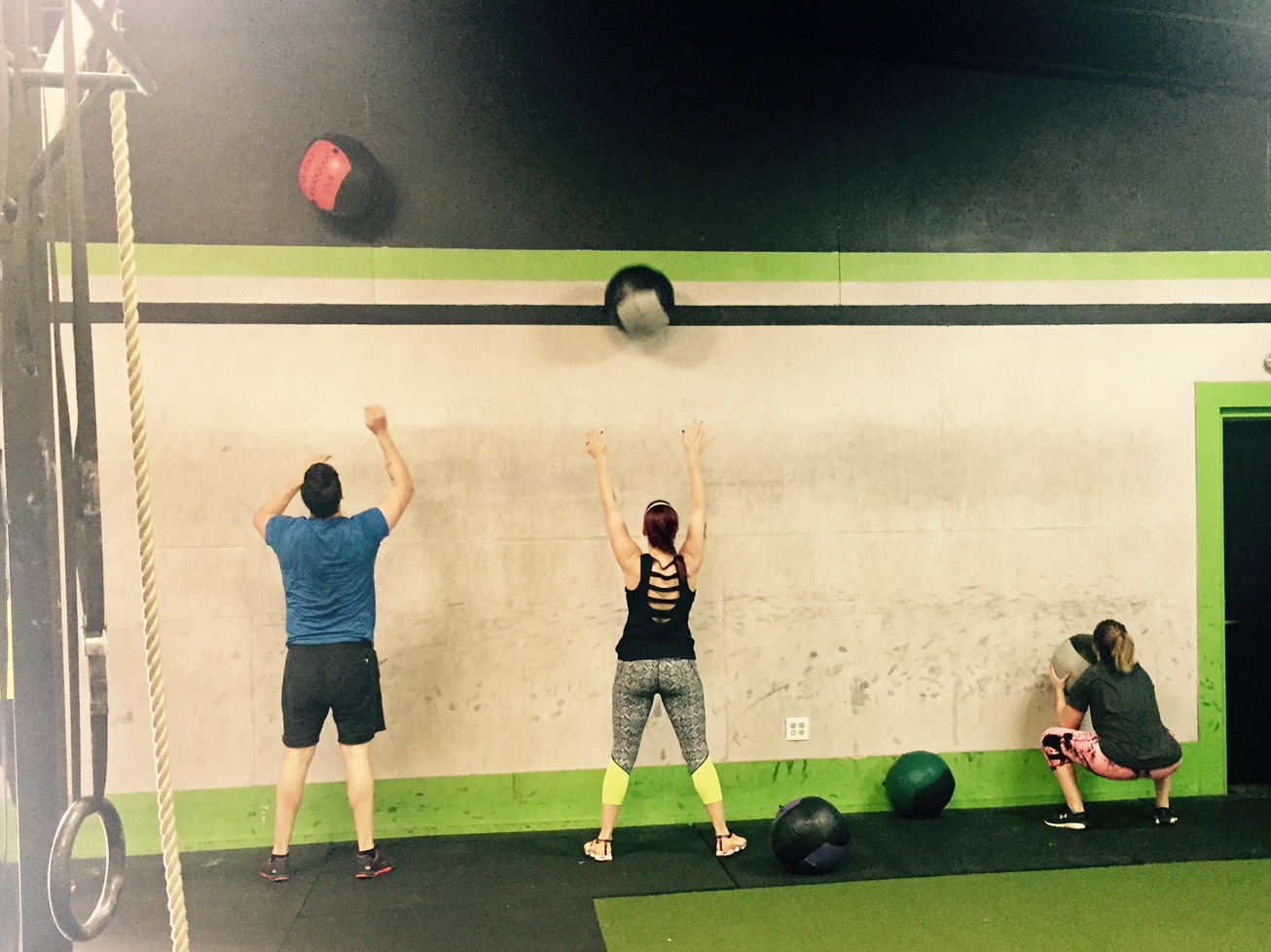There is so much YES in this article it all needed to be posted. Enjoy every word.
NO PLAN B: MAKE THE DECISION TO BE STRONG from StrongFirst
1. Decide to Have a Coach
First, you must decide to seek out guidance. You must make the fundamental decision that awaits all people who train with iron: will you prioritize your safety and capacity for long-term progress, or will you choose your ego?
I know of many people who initially favored their ego, only to have their priorities change following an injury. I encourage you all to decide to seek out the guidance of a coach sooner rather than later, and to continue to be willing to seek out instruction throughout your training career.
2. Decide to Be Coachable
The trickier part comes once you have found a knowledgeable coach: listening to that coach. There is an important distinction between having a coach and being coachable. Having a coach involves willingness; being coachable requires humility.
I remember a session I had with Dr. Mike (Chief SFL Michael Hartle) several years ago. I was very proud of my deadlift and was excited to show it to him. However, his astute eyes noticed several tension “leaks” in my set-up, and he worked with me to dial them in.
Guess what happened?
I wasn’t able to lift as much. That day, I couldn’t even get within 80% of what I had been lifting.
That’s when Dr. Mike gave me some of the best advice I’ve ever received: “Sometimes, you have to regress to progress.” Thankfully, I made the decision to follow my coach’s instructions; as a result, I added over fifty pounds onto my deadlift over the next ten months—and with improved form, too.
I share this story often with my students. I see their frustration when a suggestion I’ve given them mandates that the weight on the bar goes down or that they temporarily step back to a regression of a movement. I then remind them that it’s part of the process; being a student of strength requires patience, not a battering ram.
3. Decide to Rest
Rest is important for many reasons. It takes at least three minutes for our ATP stores to replenish themselves after a heavy strength exertion, and it takes approximately five minutes for our heart rate and blood pressure to settle. Furthermore, it takes our mind time to regain its readiness for another exertion, as well.
Resting also comes into play within each week’s plan and between training cycles. Human bodies are not machines that purr along at maximum efficiency. During the SFL Certification, many approaches to programming are explored, and none condone training a given lift at near-max weights more than once a week. Different programs encourage different frequencies of and approaches to “light days,” but one thing is consistent: you cannot train with heavy loads all of the time.
Nor is it either safe or possible to continuously move toward an ever-higher peak. I train myself and my students with cycles that last four to twelve weeks, and follow each cycle with an appropriate deload. Not only does this enable safe and sustainable progress, it also helps training retain a degree of fun. It can be downright refreshing for driven athletes to take a step back and spend some time simply moving for the sake of moving.
I also feel compelled to emphasize the importance of getting enough sleep. Brett Jones, Chief SFG, mentioned in his post How to Exercise the Vital Muscle of Patience that if you’re only sleeping for four or five hours a night, “sleep needs to become a priority for you.” Working on improving your sleep habits can have a tremendous effect on your training (and your life)!
So, when you make the decision to train smarter, your decision doesn’t just involve what you’re willing to do during your sets. It also includes your willingness to take a step back and let your body and mind recharge.
4. Decide to Following Reasonable Programming
At StrongFirst, we know that developing reasonable programming is more about taking things out than of adding in “random acts of variety.” If you are training for a half-marathon while trying to improve your deadlift while committing to a twice-weekly pickleball team while really wanting to get in a few training sessions with your bodybuilder friend to help you get swole while still making sure you don’t miss your favorite yoga instructor’s classes —well, best of luck to you.
Don’t get me wrong: it’s not necessary for every person to have a specific goal for their training. In a world where many people have lost their love of movement, it is a wonderful thing for people to take part in activities that bring them joy.
But if you have a goal—make it your goal. Keep things simple and prune away what doesn’t get you there.
There are many effective programs out there, but one thing holds true: the safest and most effective programs are simple (but not easy).
The Success Is in the Decision
Whatever movement you’re doing—hinge, squat, push, pull, carry—and whatever tool you’re using—bell, bar, or body—the key to a successful lift or set is in the set-up.
Whatever goal you’re working toward—a higher powerlifting total, a regained ability to squat, improved heart health, increased stamina and energy—the key to success is in your initial decisions to seek the guidance of the people who can get you there, to remain coachable, and to keep things simple and in balance.
Commit.
Leave yourself with no other options than the one that leads to optimal performance and maximal safety.
When your body and mind have made the same decision and are working together, following the plan is the easy part. After all, it’s the only option you’ve allowed yourself.
Warmup
Dynamic Athletic Movement
Hip Mobility
10 Downdog Push-ups
Skill
15 Minutes for quality
Levels 3/4
3-5 Bar Muscle-ups
60 sec Pike Stretch
5-10 Unbroken Kipping Handstand Push-ups
60 sec Straddle Stretch
Levels 0-2
3-5 Strict Pull-ups – negatives or bands if necessary
60 sec Pike Stretch
5-10 Strict Push-ups – work on holding a tight plank the entire duration of the set
60 sec Straddle Stretch
Strength
Levels 2-4
18 Minutes (FIVE sets–first work set starts at 3:00, last work set is at 15:00)
E3MOM
3 Deadlifts
Work up to ~85% of your 1RM
Levels 0/1
18 Minutes (first work set starts at 3:00, last work set is at 15:00)
E3MOM
5 Double Kettlebell Deadlifts
30 second Downdog Hold
Conditioning
“Potential Grizzlies”
7 Minutes AMRAP
Levels 2-4
9 Clean and Jerks
9 Toes to Bar
L4 – 135/95
L3 – 115/75
L2 – 95/55 (use barbell ONLY if doing full range of motion Rx T2B also, otherwise: 2KB Clean and Push Press)
Levels 0/1
9 Kettlebell Clean and Push Press (Single–9 per arm–or Double)
9 Knees to Elbows (Hanging Knee Tucks/V-ups as necessary)

